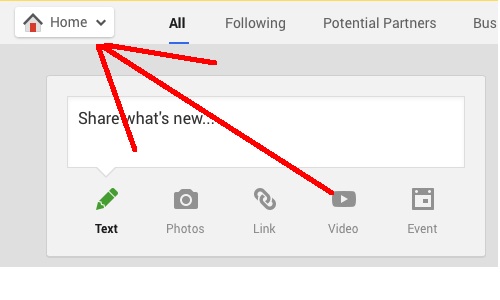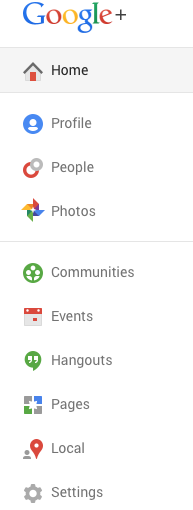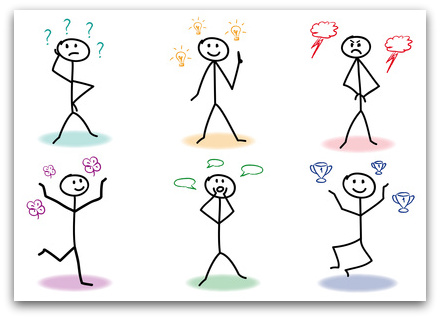5 Google+ Features That Are Useful For Coaches
In today’s guest post Chris Chaves shares practical information and advice for coaches on using one of the fastest growing social media platforms:
5 Google+ Features That Are Useful For Coaches
By Chris Chaves
There are dozens of social media sites you can use to market yourself as a coach but few have as many features as Google+.
I’ve recently been spending quite a bit of time familiarizing myself with Google + and while I don’t claim to be an expert just yet, I did want to share with you an overview of it’s tools and features.
Here are some reasons why you should add Google + to your coach marketing plan:
- Google + is one of the fastest growing social media sites out there. It surpassed LinkedIn and has more active users than any other social media site except Facebook.
- Google + is integrated in Google’s search engine system so having a high number of followers in Google+ can greatly increase your search engine rankings.
- Google + is also integrated into YouTube (which is also owned by Google). This makes it really easy to create and share videos (more on that in a minute)
Before I get into the various features within Google+, lets start with a quick lesson on how to access the menu bar (which is where you’ll find all these features)

Just hover over the home icon in the upper left side of the screen to open the navigation bar.

Here are 5 great features within Google + that you can use as a coach to market and deliver your coaching services.
1. Circles – A Great Way To Listen To Your Potential Coaching Clients
![]()
Google + is a great tool for listening to your ideal customers and you can use a feature called “Circles” to categorize people that you want to follow. Unlike Facebook, you don’t need to send a request to someone in order to add him/her to your circles. You can create as many circles as you like and you can add people to one, or many circles.
Once you add someone to your circles, you’ll be able to see the things they post publicly.
Here are some examples of Circles you may want to create:
- Potential Partners
- Other Coaches In Your Niche
- Influential people in your niche that you want to keep an eye on
- People who are in groups or communities within your niche (potential coaching clients)
- Existing Clients
- People you meet
- Hangouts (anyone who’s attended your hangouts) – more on this later
People can’t see what circle you’ve added them to so if you add someone to a circle you labeled as “Potential Clients” or “Competition”, they won’t see the circle name. They will just get a notification that says you have added them to your circles.
2. Communities – Great For Listening, and Positioning Yourself As An Expert
![]()
Communities in Google+ are a lot like groups you find in LinkedIn or Facebook. They’re groups of people who are all interested in a particular topic. Joining communities that are focused on topics in your coaching niche can be a great way of listening to the needs of your ideal clients.
Communities also provide you with a great way to engage with other people in your niche whether they be potential clients, potential partners and/or other people who serve your ideal clients.
One way to engage with people in circles is to comment on their posts. You can also +1 their posts (which is similar to a Facebook “like”) or you can share their post with your audience. Of course, you can also create your own posts.
Much like LinkedIn and Facebook Groups, you can post tips, quotes, ask a question, and even post a link to your blog post every once in a while.
3. Video Hangouts
![]()
Google+ allows you to setup a video chat, or “Hangout” with up to 10 people. This can be great for having an online coaching session with a client, or for staring an interactive webinar that you can broadcast on your YouTube channel or on your website.
With hangouts, you can choose how public or private they are and you can set them up so they post directly to your YouTube channel so you can use the recordings anyway you like (i.e. you can post them on your website or send them to your list).
Just be careful with this though… I’ve seen coaches accidentally post private coaching sessions to their YouTube channel so you’ll want to practice a few times and familiarize yourself with these features before scheduling a coaching session or big event.
4. Events
![]()
Events are a lot like hangouts except with events, you can schedule them and invite people in advance. You can invite the public, certain communities, circles or individuals and like hangouts, you can also link these to your YouTube account so you can get a recording of the event after.
Events allow you to track RSVP’s and also integrate with Google calendars, which also make Events a great option for online group coaching sessions, periodic webinars, and presentations. Events also allow you to have a forum where people can ask questions while you’re presenting (like many of the popular premium webinar platforms)
5. Google+ Pages
You can create a page specifically for your business or coaching profile (very much like having a Facebook company page). Most coaches probably won’t need a page because they can just use their profile, but if you wanted to have a completely separate page for your business, having a Google + page may be the perfect solution for you.
While this has just been a brief overview of each of the features, my hope is that you’ll be able to take this
Here are a Few Final Tips…
- Post frequently. This is one of the best ways to increase your following.
- Add pictures and videos to your posts.
- Add hashtags to your posts to help make them more visible.
- Share and comment on other peoples’ posts.
- Thank other people when they comment/share/+1 your posts.
- PRACTICE these features with a friend (especially events and hangouts) before using them with your audience.
While I’ve only scratched the surface of Google+, my hope is that this post will give you enough of an overview to get started using this rapidly growing social media tool.
About Chris Chaves
Chris Chaves is the former Director of Sales for the Tony Robbins Coach certification program and is currently focused on helping new coaches get over the obstacles associated with becoming a successful coach through his Coach’s First Year blog.
He recently started The Coaching Success Podcast, in which he interviews other successful coaches to talk about their secrets to success. PLEASE hop on over to iTunes and give the show a rating.
Connect with Chris via:
Facebook: www.facebook.com/coachbiztips
Twitter: twitter.com/CoachBizTips
Google+: plus.google.com/+ChrisChavesCPC/posts
Google and the Google logo are registered trademarks of Google Inc., used with permission.

 Charlotta has been coaching professionally for over 12 years and in March 2013 she won Life Coach of the Year, awarded by the national body Association of Professional Coaches, Trainers and Consultants.
Charlotta has been coaching professionally for over 12 years and in March 2013 she won Life Coach of the Year, awarded by the national body Association of Professional Coaches, Trainers and Consultants.


 Beth Burgess is the founder of Smyls a solution-focused service which she set up to help people to overcome obstacles in their lives and create a fulfilling future.
Beth Burgess is the founder of Smyls a solution-focused service which she set up to help people to overcome obstacles in their lives and create a fulfilling future.


 Latrisha Jacobs, The Niche Breakthrough Specialist, works with service based change agents who lead with their heart first and who want to build big businesses and make an even bigger difference but they struggle with getting people to get what they do and want to invest in working with them and who would like to get more clarity, clients, and cash in 60 days or less.
Latrisha Jacobs, The Niche Breakthrough Specialist, works with service based change agents who lead with their heart first and who want to build big businesses and make an even bigger difference but they struggle with getting people to get what they do and want to invest in working with them and who would like to get more clarity, clients, and cash in 60 days or less.